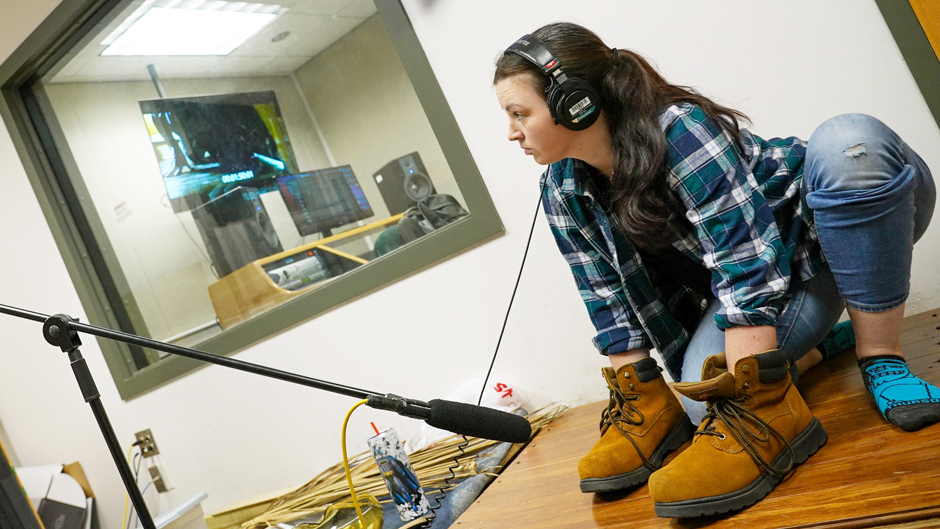Lettuce, Rice Krispies boxes, creaky stools, typewriters and sheets of all materials and textures are some of the items used for the sounds you hear on the big screen. Foley artists are the ones who create the sounds that make you feel like you are part of the film.
Jack Foley founded foley art in the 1920s when the trend of talkies, or movies synced with recorded sound for dialogue, evolved from silent movies. Foley found that performing the special effect sounds along with the scenes made it a more realistic experience for the audience, and it was more time efficient than trying to capture the natural sound.
Benjamin Zuiderweg, assistant professor of professional practice at the University of Miami School of Communication, learned that sound design wasn’t just for music, but could be used in other forms of media. He stumbled upon sound design when he was studying music technology innovation at Berklee College of Music in Boston. In class he was assigned iconic movie scenes from “Transformers” and “X-Men” and had to reproduce the sounds. This class ignited his fascination with the art of foley.
Rachel Jordan Richards, an alumna of the University who studied media scoring and production, discovered her passion for creating immersive soundscapes for the world of cinema through Zuiderweg’s class. He noticed Jordan’s natural creative talent and took her under his wing, just as his mentor did for him.
Similar to Zuiderweg, Richards began her studies in music and eventually learned that “the love for music can turn into a love for sound in general.” Their hobbies quickly became their careers.
Foley artists are essentially “thrown into a room of garbage and are supposed to make an award-winning sound with it,” Zuiderweg said. This art is a creative challenge because, most times, the object used to create a sound is not the one used in the scene, and so the artist is tasked with finding the correct metronome (or beat counter). This is where having a “music background is beneficial,” added the professor.
There is a meticulous process in creating the final project. The film’s team will meet and discuss every detail of a specific scene. The foley artist will then create and record the sound, and it’s off to feedback and editing. Foley artists are trained to pick up details that go unnoticed by the audience. For example, if they are creating the sound of footsteps, they will take note of the type of floor that is being walked on, the weight of the character, and the kind of shoes worn. Most importantly, they time the steps to synchronize the sound.
Foley art takes many layers to make the most mundane daily activities you see on the big screen sound real. Mixers play a crucial role, as they are the sound engineers responsible for guiding the audience’s auditory attention.
It took Richards 16 hours of foley art and another 16 hours of mixing to complete a five-minute scene from the 2007 film “No Country for Old Men” for her master’s thesis, where she was expected to recreate award-winning sounds.
Because the mixer serves as the “foley artist’s ears” at the soundboard and the process is heavy on feedback, Richards said, the key is having both good communication with the mixer and patience.
Foley art is such a niche industry that Zuiderweg noted there are more astronauts in the world than there are foley artists.
Richards's advice for aspiring foley artists? “One person’s trash can be another one’s treasure.” Foley art lies in creating something out of nothing. And to start, it requires basic editing software, a computer, and the creativity to create sounds with objects and props, she said.
The School of Communication offers classes in production and location sound recording, post-production sound editing and design, and advanced editing. Soon, the Cinematic Arts program will offer a class on the use of AI in the sound design industry.
Zuiderweg encourages those interested to enroll in a class and to “say ‘yes’ to every opportunity.”

